BIG Special Discounts Available NOW! Check out our Products
Leader in Waste Management Solutions | PROUDLY MADE IN THE USA ![]()
Leader in Waste Management Solutions | PROUDLY MADE IN THE USA ![]()
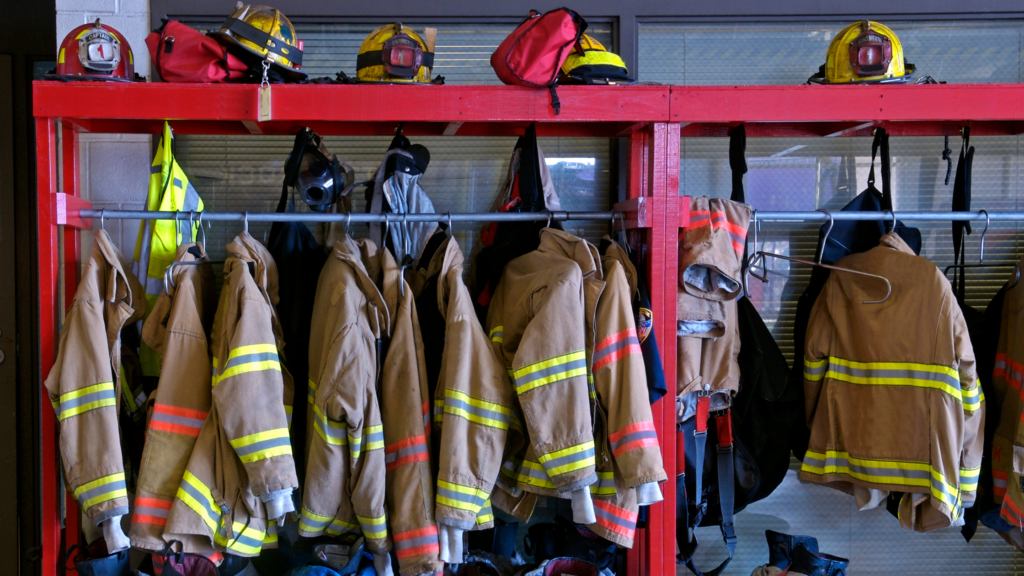
Brave police officers and firefighters put their lives on the line daily while protecting and serving. Having to think of so many important factors when it comes to saving lives, no one would ever imagine that one of life’s basic necessities would also have to factor into their thinking: where and how to use the restroom.
These bold men and women are never certain what situations they may encounter on the job, and they don’t always have access to regular bathroom facilities.
Whether their patrol routes are lacking in public restrooms or they’re battling blazes far away from basic necessities like electricity and running toilets, dedicated public servants have a lot to contend with when it comes time for a bathroom break, which makes their jobs harder.
Men and women in blue chatted back and forth online in a thread on forum.officer.com, saying:
“Like a dog, I have left my mark all over town to include people’s backyards (residential alarm calls).”
“Pick a dark corner in my county or the side of a redwood tree hidden from traffic and I’ve probably ****ed there. One thing I learned was to keep track of construction sites and farms that kept unlocked porta-potties on site.”
“For us city cops, it’s not out of the ordinary to go call to call from the start of shift to the end.”
“You do what you have to do.”
… Yeeeea. We could imagine there are more “stories” there, but we won’t ask. Instead, let’s look at the inconveniences putting our first responders in these positions in the first place.
The Issues around First Responders and Bathroom Breaks
For police officers, needing to find a bathroom while on patrol is one of the most annoying, uncomfortable, and unhealthy drawbacks of the job. It’s a bigger problem than you would think.
And there are many other considerations:
No Public Restrooms Nearby
During the day, officers and fire crew may have restaurants or building lobbies they know they can count on, and many officers did mention that they usually make stops at public places to use the restroom or even stop at home if it’s on their patrol route. But what if they’re working overnight? What if their beat is more suburban or rural, with no public restrooms for miles?
As for firefighters, so many wildfires happen in remote areas, there’s a solid chance there won’t even be a bathroom to be found for miles around. Plus, even if there was a bathroom available somewhere, the valuable time needed to find and use a bathroom could cost lives. However, bodily functions aren’t known to run our schedules or demands.
They’re Put in a Position to Break the Law
Some first responders may be inspired to find the nearest alley or tree when a restroom isn’t close by, but it’s actually illegal to urinate in public. It would be unacceptable for an officer to get caught breaking the very law they’re meant to enforce, but they’re many times put in positions where they have no choice.
Smile—You’re on Camera!
With doorbell cameras, red light cameras, and surveillance cameras everywhere, not to mention police bodycams, managing to find a private spot somewhere in public is nearly impossible today. A couple officers acknowledged how this is now playing into their restroom woes — some have changed their habits and others don’t seem to care.
“There are way to many cameras out there now……………………….but back in the day.”
“But speaking of cameras, about the time they release body cams the number of ****s I take a day is going to increase dramatically. And John Q. Citizen is going to get a front row seat.”
Today, if first responders don’t watch their surroundings or find a good place to hide, what might start as an innocent effort to relieve oneself on the job could end in a P.R. nightmare if a camera catches the officer and someone posts it online.
Females Are Especially Vulnerable
For female officers and fire crew, picking a tree isn’t really an option! These officers have the additional hardship of having to remove their utility belts (gun holster and all) in order to use the restroom, putting them in a particularly difficult situation. Doing this means their weapon isn’t completely in their control, and they also have to find a secure (and sanitary) place to put it.
One officer said, “As a girl, you have to take off a few layers of gear most of the time. You may be on the side of the road using your doors to shield yourself and thankful that you have napkins, water, and cleaner in your cruiser while cursing all the guys and how easy it is for them.”
So, What’s the Solution to the Potty Probem for Police and Firefighters?
We’re so glad you asked! Some first responder agencies are turning to portable bathroom solutions like Brief Relief to protect their workers and their reputations.
If you served in the military you may remember WAG Bag®s. The sister brand of Brief Relief, Cleanwaste, invented the original WAG Bag®. The WAG Bag® (Waste Alleviation and Gelling Bag) is a disposable human waste bag. And yup, that means exactly what you think it does. It’s a bag for catching and disposing of human waste.
When out on patrol with only a car for privacy, the Brief Relief Liquid Waste Bag is a compact, individually packaged bag for liquid waste that can be used by both men and women. It ensures everyone has a comfortable, sanitary way to go. It contains a unique blend of enzymes and polymers that convert urine into a deodorized gel, just like the WAG Bag®, and each bag can hold up to 20 ounces of urine.
If you’re looking for a complete solution, we recommend The Brief Relief Lavatory System. It includes:
With this gear, police officers and firefighters have everything they need on hand to find a clean, private, and legal way to find relief anywhere in the field.
To learn more about how Brief Relief waste bags help first responders, the military, and
government agencies perform their jobs better, check out our full product line here.
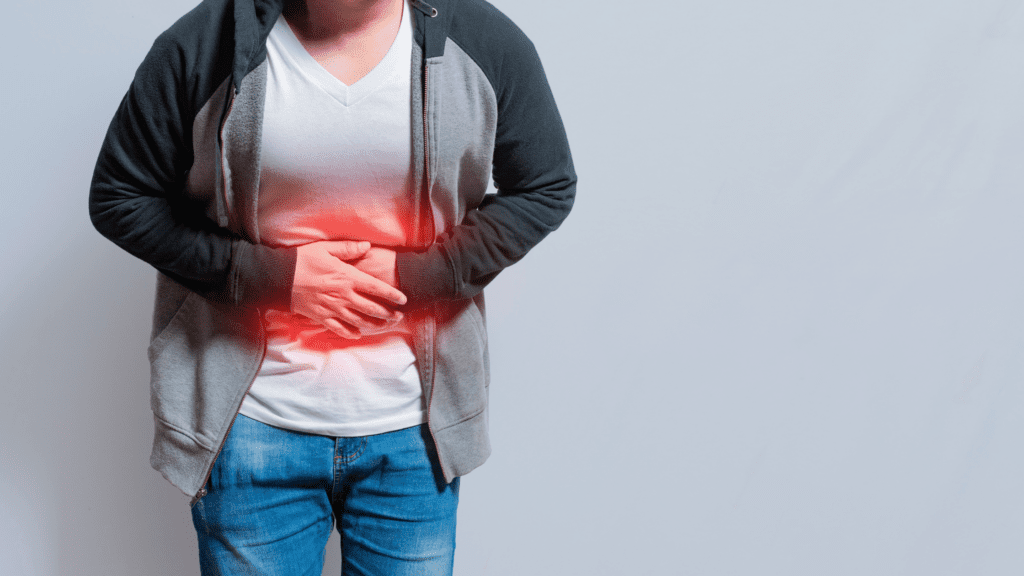
There are a surprising number of businesses and industries where vomiting is a common occurrence.
Did you know that many surgical center patients experience Postoperative Nausea and Vomiting (PONV) after surgery? Typically occurring within the first 24 hours post-surgery, around 20-30 percent of patients find themselves vomiting, while approximately 50 percent of patients experience nausea after being discharged. But medicine is just the beginning when it comes to “customer nausea.”
For example, air travel or water activities can be a nightmare for the estimated 1 in 3 people who are susceptible to motion sickness. Your customers deserve better than a flimsy paper bag — as do the other folks around them!
By providing proper sick bags for customers and clients, you avoid problems like medical professionals wasting their valuable time cleaning up vomit or spoiling an outing for an entire group with a leaky, stinky mess.
When choosing a sick bag for your business, there a several factors to consider:
Durability. Will the bag hold up?
This is probably the most important requirement! You’ll want a sturdy bag that’s both waterproof and leak-proof.
Simplicity. Is the bag easy to use?
A bag needs to be easy to use in a hurry. The last thing a person wants to worry about is whether or not they can even break into their sick bag when the urge hits.
Volume. What is the bag’s capacity?
You’ll want to be sure that your bags aren’t at risk of overflowing. Quality vomit bags usually hold 500 or more ml of liquid.
Security. How easily does it close, and will it stay closed?
If you have a bag with a poor seal, you risk making a mess and exposing germs (not to mention the smell factor).
When it comes to your vomit bags, settle for nothing less than a bag built like Fort Knox.
How do I choose?
Now that you’re better informed about what makes a quality nausea bag, how will you know which one to get? We’ve compiled a short list of affordable vomit bags available on the market.
PukeBag Disposable Vomit Bag
This option is a travel-friendly, cost-effective option that comes in packs of 50.
The mouthpiece makes an easy target, and the bags hold 1500 ml of vomit. The bag has a secure and convenient closure system — just twist the bag and secure the notched ring to prevent leakage.
Durability– 4 stars
Simplicity– 4 stars
Volume– 5 stars
Security– 3½ stars
Overall Rating– 4 stars
HealQu Disposable Vomit Bag
This bag’s ergonomic design is great in an emergency, and it has a 1000 ml capacity. These bags feature a twist and notched-ring closure solution similar to the Pukebag.
Durability– 3 stars
Simplicity– 4 stars
Volume– 4½ stars
Security– 3½ stars
Overall Rating– 3½ stars
VNS Creations Disposable Vomit Bag
This bag is actually made of paper but coated with a special leak-resistant polyethylene layer, making it waterproof but less sturdy than its competitors.
These hold up to 2L and feature a simple metal-tab closure system.
Durability– 2 stars
Simplicity– 4 stars
Volume– 5 stars
Security– 2 stars
Overall Rating– 3 stars
While those listed above are serviceable options, our money is on the Brief Relief Liquid Waste Bag. It’s not just a bag; it’s actually a bag developed using the same technology as the original WAG Bag.
WAG (short for “waste alleviation and gelling”) Bags are a convenient, portable, and sanitary solution when you need to contain waste.
These go far beyond just holding waste. Each bag’s gel-activated technology instantly gels liquid for easy disposal in any normal trash bin.
These bags hold 20 oz of liquid and they’re triple-lined, making them odorless and puncture-proof! Plus, not only do they seal up tight for disposal, these bags can be reopened and resealed if the urge strikes again. No need for a new bag as the contents will re-gel any additional vomit.
Durability– 5 stars
Simplicity– 5 stars
Volume– 4 stars
Security– 5 stars
Overall Rating– 4½ stars
The Choice is Clear
When one of your customers is about to be sick, you want to do everything possible to avoid a messy, smelly leak. This is why Brief Relief’s Liquid Waste Bags are the clear choice. Not all bags are created equal, and quality matters when you’re toting around “delicate” material.
Brief Relief doesn’t just have a near-perfect satisfaction rate. We’re an industry leader in the innovation of safe, convenient products that allow users to manage waste in a dignified, reliable, and environmentally-friendly way … and all our bags are made in the USA.
To learn more about how Brief Relief’s waste bags are providing superior, more sanitary solutions for all, check out our full product line here.
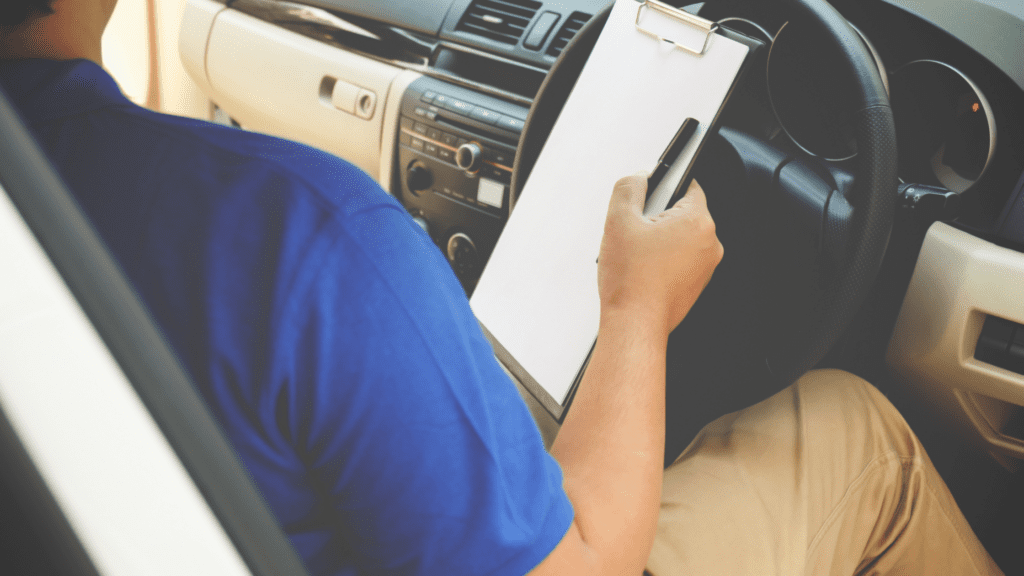
It’s no secret that we depend on the ease of at-home delivery services, especially since COVID darkened our doors. These days, we rely on package delivery services more than ever.
Drivers already face the almost impossible challenge of quickly delivering every single package on their trucks during a shift, but you may not realize how incredibly unsafe being a delivery driver can be!
Drivers have to contend with threats ranging from unsecured dogs to actual gun violence, all while just trying to do their job and stay on schedule. So what are some of the ways your company can help keep drivers safe en route?
Hazards Faced by Delivery Drivers
For one whose entire job takes place in a moving vehicle, there is the obvious risk of auto accidents. Here are some ways you can help protect your drivers on the road.
The Risk of Violence
The threat of violence against delivery drivers is up. In fact, last spring, almost 2,000 drivers signed a petition calling for stricter safety measures after several drivers were actually shot at!
While you as an employer can do your best to protect on-the-job drivers by installing cameras and panic buttons in delivery vehicles, much of what happens during a shift is largely out of your hands.
Here are some tips to share with your drivers:
Workplace safety is of the utmost importance, and the world of package delivery services is certainly no exception. And what better way to increase productivity than to have a convenient, fast solution that cuts down on the possibility of lost time, product, fuel, or the drivers’ risk of an incident?
At Brief Relief, we truly care about the safety of delivery drivers. We’re also an industry leader in the innovation of safe, convenient products that allow users to manage waste in a dignified, reliable, and environmentally-friendly way.
To learn more about how Brief Relief’s waste bags are providing safer, more sanitary solutions for all, check out our full product line.
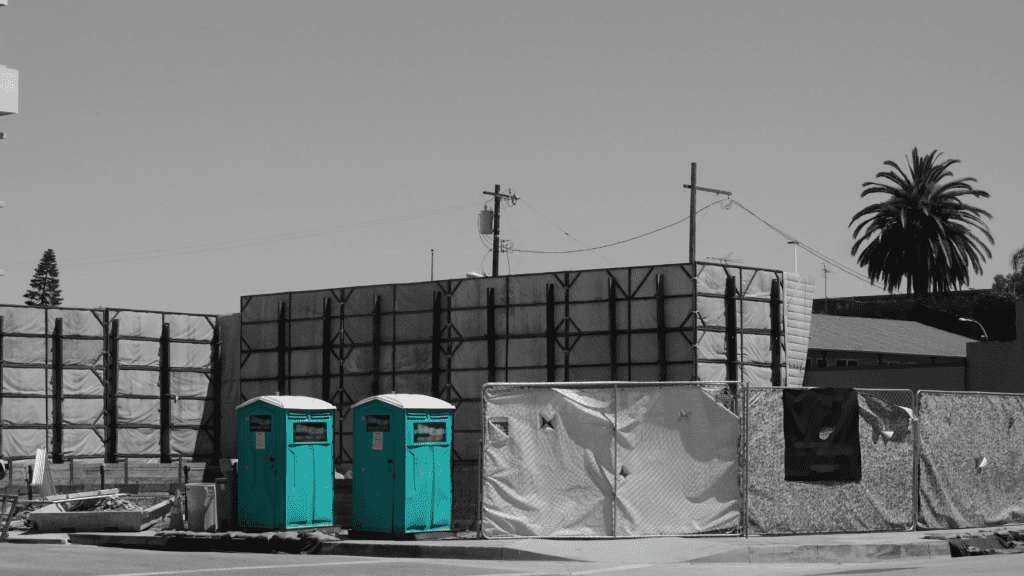
If you’ve ever been on a remote job site or had to use the restroom while working miles away from the nearest service station, we’re sure you’ll agree that Porta Potties are a ubiquitous portable toilet solution.
Unfortunately, many workers find having to use them so unpleasant, they’ll actually hold it in to avoid using one. Everyone knows that putting off using the restroom is hazardous to your health, but what are the alternatives?
What if we told you there’s a better way? What if there was a cleaner, more sanitary (and way less smelly) way to provide portable toilets for your employees in the field?
Introducing Portable Commodes
What’s a portable commode? We’re so glad you asked! Portable commodes are easy-to-transport systems, usually consisting of a privacy tent, receptacle, and toilet seat. But what really makes them a preferable alternative to a Porta Potty is that they’re used in conjunction with a waste bag.
Waste bags are a convenient and sanitary solution when you need to go on the go.
Need more convincing? We’ve rated both Porta Potties and portable commodes across several categories to help you decide which system is right for your next event.
Round 1: Cleanliness
Let’s not beat around the bush; Porta Potties are gross. People are in such a hurry to get in and out that aiming is no longer a priority.
Throw some carelessly-placed toilet paper into the mix, and it’s just a stinky, soggy disaster. If you’re lucky, there might be a hand sanitizer pump inside. If you’re really lucky, it won’t be empty.
With portable commodes, there’s no mess, no spillage, and no smell. The polymers and enzymes in the waste bag turn the waste into a deodorized gel, eliminating any residual odor. Each portable waste bag even comes with ample toilet paper and antimicrobial wipes.
Cleanliness Score:
Porta Potty – 1/10
Portable Commode – 8/10
Round 2: Portability
How easily can you transport Porta Potties to remote locations? Because of the height and weight of a standard Porta Potty, they have to be delivered and carted away on trucks. Some of the heavier ones even require a crane!
With portable commodes, like the Brief Relief Lavatory System, all you need is a flat surface to set up the privacy tent. Place the commode inside, line it with a portable waste bag, and you’re in business!
Plus, since they’re super lightweight and compact, you can throw it in your trunk and avoid the hassle of truck delivery and removal.
Portability Score:
Porta Potty – 2/10
Portable Commode – 10/10
Round 3: Cost
On average, it costs around $100 per day to rent a single Porta Potty. Want the convenient extras like mirrors, purse shelves, and hand sanitizers? It can cost thousands of dollars to accommodate a large crowd, and that’s just for one day!
The Brief Relief Lavatory System costs less than $300. It comes with a privacy tent, a commode with a full-sized seat, and enough supplies for ten people for one day. The tent and commode can last for years when cared for properly, and replacement supplies are around $200 for a pack of 50.
Cost Score:
Porta Potty – 2/10
Portable Commode – 7/10
Round 4: The Stink Factor
I mean, this one kind of speaks for itself. While Porta Potties do make an effort to minimize unpleasant smells (you’ve seen that blue cocktail of chemicals working hard down there), they’re still literally just tiny houses full of gallons of waste. There’s no way around it. The stench of a Porta Potty is otherworldly.
A portable commode, however, doesn’t actually store any waste. You simply seal up the waste bag and dispose of it in any trash receptacle! And before that happens, the powder in the bag eliminates bacteria and odor.
Stink Factor Score:
Porta Potty – 1/10
Portable Commode – 10/10
Round 5: Maintenance
Servicing Porta Potties has been described as one of the worst jobs in the world. As we mentioned above, Porta Potties hold gallons of waste, and they’re typically only emptied when they’re close to overflowing.
Once filled, a crew comes in to stick a vacuum pipe into the bin and suck its contents into a tanker truck for treatment and disposal. It’s an intense, risky job.
With the Brief Relief Lavatory System, there’s minimal cleanup involved. The bags contain all the hazardous waste and are disposed of after they’re used. Simply sanitize your seat and at most, give the privacy tent a quick hose rinse. No muss, no fuss.
Maintenance Score:
Porta Potty – 2/10
Portable Commode – 9/10
Portable Lavatories Are the Clear Winner
It’s pretty clear portable commodes are the cleaner, simpler, and more cost-effective solution for a healthier, happier environment for your workers.
We should know. Brief Relief doesn’t just have a near-perfect satisfaction rate. We’re an industry leader in the innovation of safe, convenient products that allow users to manage waste in a dignified, reliable, and environmentally-friendly way.
Our solutions are perfect for anyone who needs more sanitary, functional, portable answers. No matter where life takes you, Brief Relief goes where you go. To learn more, check out our full portable commode line.

It’s a simple fact that people love the convenience of at-home delivery services, especially since the dawn of the pandemic. These days, we’re relying more and more on delivery services.
Drivers already face enormous challenges when it comes to delivering every single package on their trucks during their shifts. Still, most people probably aren’t aware of the most annoying, uncomfortable, and unhealthy challenge of all: needing to find a bathroom while out on their route.
Why Not Just Stop Along the Delivery Route?
Everyone knows that holding it in isn’t just annoying, it’s also incredibly unhealthy! You may be thinking, “Why don’t drivers just stop when they need to use the restroom?” Unfortunately, it’s not quite that simple.
It’s common for delivery drivers to work long, grueling shifts since most delivery service providers don’t allow drivers to return with any undelivered packages from their routes. Drivers have to hustle to unload all of their deliveries during a single shift.
Furthermore, most drivers are tracked and timed! Any time a driver’s stop clocks in at more than a few minutes, their employer gets a notification, leading to drivers being chastised and, in some extreme cases, sent home for “wasting time” by going to the bathroom.
Where Does One Go?
So where does that leave drivers when nature calls? While they may catch a lucky break with a delivery to a convenient office lobby or coffee shop, more often than not, drivers are forced to make due with makeshift toilet solutions while on the go.
We’ve heard of all kinds of workarounds — plastic bottles, cleaning wipe containers, and even small trash cans in a pinch. These options are simply irritating and unsanitary, especially for female drivers!
WAG Bag®s Are the Solution
Never fear, WAG (short for “waste alleviation and gelling”) Bag®s are the safest, most reliable solution for delivery drivers.
WAG Bag®s are a convenient, portable, and sanitary solution when you need to go on the go. Each bag is filled with a powder that gels and solidifies waste while neutralizing bacteria and odor.
And WAG Bag®s are for everyone! Included in Brief Relief’s huge range of sanitary, portable toilet solutions is the Brief Relief Liquid Waste Bag. This mighty bag holds up to 20 oz of liquid and is ideal for all drivers, whatever their gender.
The WAG Bag® has truly been an overlooked need by many organizations, and it’s one that can help drivers complete their routes without risking their health and comfort.
Trust us, our sister company, Cleanwaste, is the creator of the original WAG Bag®, and years of research went into forming the safety, reliability, and durability of our bags. Brief Relief doesn’t just have a near-perfect satisfaction rate. We’re an industry leader in the innovation of safe, convenient products that allow users to manage waste in a dignified, reliable, and environmentally-friendly way … and all our bags are made in the USA.
To learn more about how Brief Relief’s waste bags are providing safer, more sanitary solutions for all, check out our full product line.

When it comes to employee safety and sanitation across the construction, utility, and mining industries, the Occupational Safety and Health Administration (OSHA) prides itself in making sure employers walk a straight line. So, don’t just guess at OSHA’s regulations for restrooms (hefty fine, anyone?). Instead, let us share them with you. We’ll even provide you with an easy solution at the end to make sure you’re OSHA compliant.
To stay compliant, make sure you check all the following boxes:
Toilets have to be provided for employees according to the following numbers:
| Number of employees | Minimum number of facilities (separate for each sex) |
| Less than 20 | 1 |
| Over 20 | 1 toilet seat and 1 urinal per 40 workers |
| Over 200 | 1 toilet seat and 1 urinal per 50 workers |
And if these numbers weren’t vague enough, OSHA goes on to say that “employers must provide an adequate number of restrooms for the size of the workforce to prevent long lines.”
As you’re very well aware, restroom needs depend on a variety of factors, including fluid intake, medical conditions, medications, air temperature, and more.
For example, during cooler months, you could get away with the minimum number of facilities at the job site. But during warmer months, you may need to double that number as your employees will likely consume more liquids to stay hydrated. (Speaking of which, if you’re looking for the best way to protect outdoor workers in extreme heat, look no further.)
And when it comes to mine safety, the Mine Safety and Health Administration (MSHA) requires surface coal mine operators to provide at least one approved sanitary toilet at a location that’s convenient to each surface work site. They also require one additional approved sanitary toilet for each 10 miners working at a location.
OSHA also requires job site restrooms to be in sanitary condition. Employers should provide:
And, of course, we need to mention cleanliness, as in how often the portable restrooms are cleaned.
While there are no set rules, OSHA requires employers to “regularly” evaluate toilet conditions and set routine servicing schedules for cleaning, waste removal, and supply replenishment. (The servicing scheduling should account for the number of on-site toilets, workers, and shifts.)
Also, keep in mind that these are the minimum restroom requirements set forth by OSHA. Be a decent human. Go above and beyond to make sure your workers’ restroom experience is as enjoyable as possible.
Also according to OSHA, employers with mobile workers must provide readily available transportation that provides prompt access (i.e., less than 10 minutes) to restrooms if they are not available at the work location.
Again with the ambiguity, we know.
But as an employer, this restroom requirement actually does benefit you as well because it cuts down on what we like to call “rolling costs.”
Think about it: Do your employees have to use a company vehicle to travel to a bathroom from the job site or construction site? How much gas is used every trip? How many extra miles is that putting on the vehicle, adding to maintenance costs?
When you consider all those related expenses, your employees’ hourly cost can easily quadruple, if not more.
OSHA also requires that you avoid imposing “unreasonable restrictions” on restroom use, such as those that cause extended delays or limit restroom use—i.e., locking the doors and requiring the employees to ask and sign out a key.
Important note: This still means you as an employer need reasonable restrictions on access to toilet facilities. Whether considered reasonable or not will be up to the discretion of OSHA’s compliance officer if a citation should ever be issued.
OSHA evaluates restrictions on a case-by-case basis, giving careful consideration to the nature of the restriction (i.e., how long workers have to delay restroom breaks) and employers’ explanations.
[Psst—If you feel like nerding out over the exact implications of this requirement, here’s OSHA’s reference number: §1910.141(c)(1)(i). You’re welcome.]
We’d be doing you an injustice not mentioning Brief Relief’s line of products here. (Shameless plug to follow.)
Consider the Brief Relief Lavatory System to be your OSHA-compliant, full-service bathroom solution for mobile crew members. It comes with a privacy shelter, commode, full-sized seat, and supply of single-use Disposa-John waste bags.
To use it, an employee simply sets up the privacy shelter, places the commode inside, and lines it with a Disposa-John waste bag. When they do their doody, the chemical compounds inside the waste bag convert the liquid and solid wastes into an odorless gel. When finished, the employee simply removes the waste bag and seals it closed.
Voila!
And because Brief Relief waste bags are non-toxic and landfill-safe, they can be thrown away in any regular trash can.
Storage is effortless as well. Workers can set up the Brief Relief Lavatory System and fold it away in a carry case in a matter of minutes.
No more bacteria-infested, smelly porta-potties. No more hours of wasted time and money trying to get to and from the restroom sites. No more privacy issues for team members. We created a solution that successfully tackles OSHA’s restroom requirements and common portable toilet problems.
To browse the complete line of Brief Relief products for your workers, visit our shop.
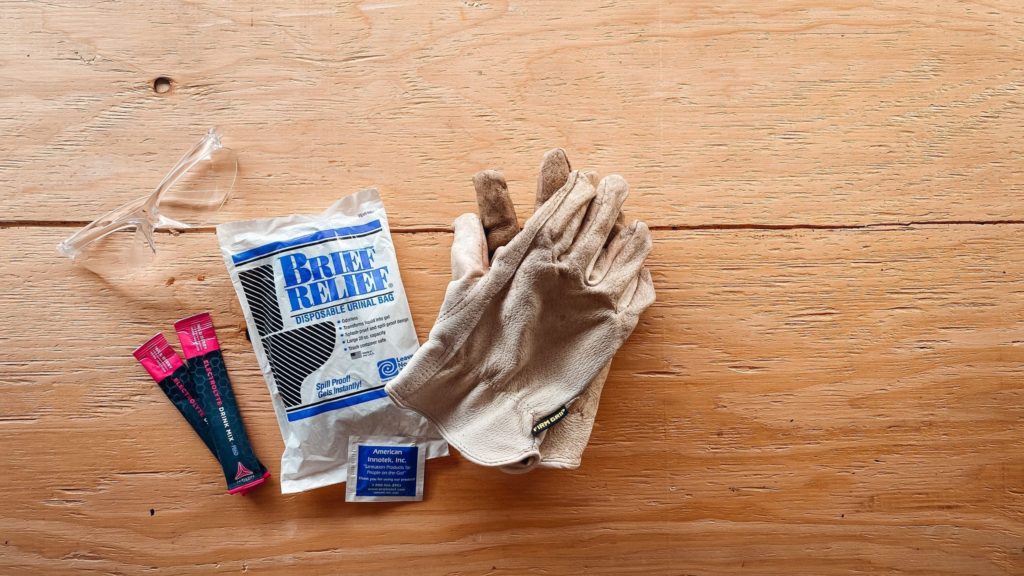
[vc_row][vc_column][vc_column_text]
In the age of this global COVID-19 pandemic, it is important for everyone to remain as healthy and hygienic as possible. While on the front line, first responders, FEMA & Red Cross workers, military personnel, utility and construction workers, and medical staff must interact with the general population. It is uncertain which individuals are infected with the coronavirus since not everyone shows symptoms. These brave individuals put themselves at risk in order to assist those in need. Brief Relief can keep things safe and sanitary and is the best choice when local facilities are unavailable.
During these long shifts, many of these personnel must utilize the closest restroom available. Rather than continuing to use local toilets that may or may not have been recently sanitized, Brief Relief products allow those on the front line to answer nature’s call in the most sanitary way possible and reduce the spread of COVID-19.
[/vc_column_text][vc_column_text]
Depending on the material of a toilet seat, stall handle, and sink knob, the COVID-19 virus can survive from a number of hours to a number of days in a public bathroom. While many facilities are doing all they can to keep conditions sanitary, personnel and staff cannot be certain if the bathroom has been recently cleaned or not. During grueling 12 hour or more days, it can be difficult for these brave individuals to find a safe and hygienic area to use the bathroom. By using public toilets, they put themselves at risk for contracting the very virus they are battling against.
Fortunately, Brief Relief products can be used in any setting and provide a hygienic method to relieve one’s self. The following products can help anyone in the hospital, FEMA & Red Cross sites, utility and energy sectors, and military response areas reduce the likelihood of contracting and spreading the virus from a public bathroom:
• Portable Toilet Waste Bags: Suitable for both liquid and solid waste, these disposable waste bags for portable toilets allow those on the front line to easily relieve themselves in nearly any environment. They can be used on their own or combined with a portable toilet.
• Commodes Systems and Toilet Seats: A commode is a practical solution to digging a latrine outdoors. Available with a riser and toilet seat for comfort, a commode mimics a traditional toilet. These systems should be combined with Brief Relief waste bags to ensure maximum hygiene.
• Privacy Shelters: Those who do not wish to complete their business with everyone watching can escape to a privacy shelter and relieve themselves with peace of mind. The shelter is easy to set up and repels water during storms. With an inner zipper and lock, responders do not have to worry about someone walking in on them.
[/vc_column_text][vc_column_text]
Additional products that FEMA & Red Cross workers along with first responders, military personnel, utility and construction workers, and medical staff can benefit from during the COVID-19 pandemic include disposable hand wipes, fluid tactical electrolyte mix, and heat relief towels. The wipes allow front line workers to remain hygienic even when no hand washing stations are available. They are biodegradable, which makes them perfect hygienic environmentally safe products! Fluid tactical electrolyte mixes come in a variety of flavors and replace all vital electrolytes at the same ratios as they are lost in sweat. The heat relief towels ensure those who are working stations outdoors do not experience heat stroke. It’s important to keep those on the front lines as safe and comfortable as possible!
Brief Relief products are designed with everyone in mind. Men and women who risk exposure to COVID-19 by utilizing public restrooms will find it is safer and more hygienic to use our environmentally safe products. Our disposable waste bags for portable toilets are approved to be thrown away in trash cans in any state or province. With the polymers and enzymes in our waste bags, urine and stool are biologically broken down to become safe for disposal. With a shelf life of 10+ years, you do not have to worry about any of our products breaking down throughout the COVID-19 pandemic.
If you have any questions or need assistance placing an order for your first responders team, please do not hesitate to contact us today! Those who are ordering on behalf of the U.S. Military are encouraged to contact Louis Ortego directly at (858) 354-5034 or [email protected].
[/vc_column_text][/vc_column][/vc_row]
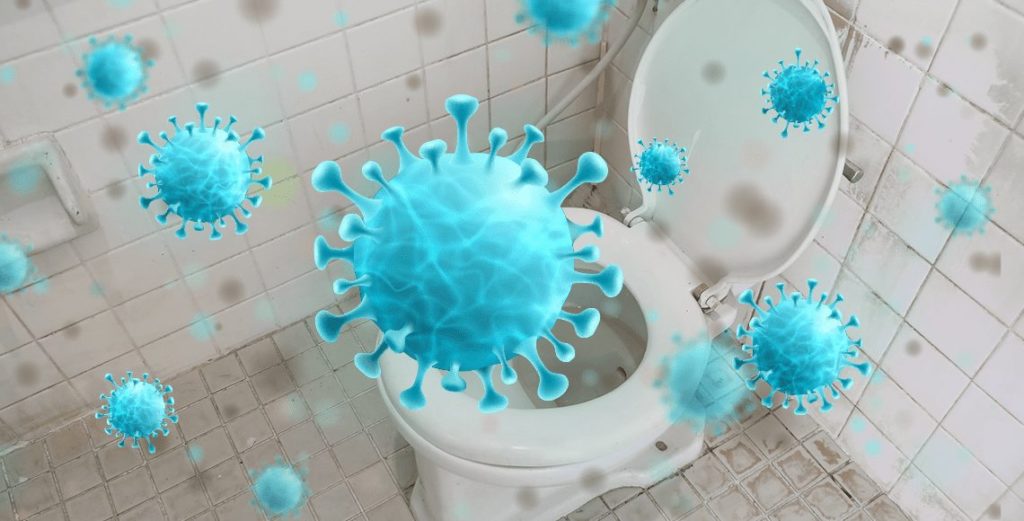
[vc_row][vc_column][vc_column_text]
[/vc_column_text][vc_column_text]The CDC released recent findings that COVID – 19 “SARS-CoV-2 RNA” was identified on surfaces for approximately 5 days. Your employees are especially at risk from COVID-19 infection in small places like public bathrooms. Now, more than ever, its vital that you keep your employees healthy and safe from infection.
Our goal at Brief Relief is a safe, hygienic, and productive workplace wherever your employees conduct their daily tasks. Brief Relief is trusted by thousands of mobile workers everyday. Restroom facilities are becoming very limited and the available alternatives are a health hazard to your employees. Brief Relief is helping prevent the spread of COVID-19 by:
[/vc_column_text][vc_column_text]
[/vc_column_text][/vc_column][/vc_row][vc_row][vc_column][vc_column_text]
[/vc_column_text][/vc_column][/vc_row]

[vc_row][vc_column][vc_column_text]Factors such as age, bowel health, diet, and the presence of underlying conditions all play roles in determining how often we need to go to the bathroom. Therefore, no two people will have identical frequencies and timing when it comes to the need to relieve themselves. With that in mind, companies need to be fair when it comes to policies on restroom breaks in working environments.
If you deny your employees the right to go to the bathroom, your organization could face disciplinary measures. In 2014, the WaterSaver Faucet Co. found itself in court after their employees filed complaints against the company for their limitations on toilet breaks.
WaterSaver Faucet Co. was penalized because 19 of their employees were exceeding the allowable 30-minute per week bathroom break limit. The company’s bathroom policy allowed each employee only 6 minutes of bathroom time per day. The company installed a tracking system to monitor how much time each employee spent in the bathroom. They required employees to swipe their ID card to gain access to the bathroom. The company even offered $20 gift card incentives to workers who don’t use the restroom at all during their shift.
While this company’s bathroom policy may seem unfair, technically they didn’t break the law. According to OSHA, there is “no federal standard for the number of allowed restroom breaks or any specific restroom usage schedule exists.” Furthermore, OSHA states, “Any restrictions an employer implements on restroom access is monitored on a case-by-case basis.”
In the case of WaterSaver, the company’s strict bathroom policy was implemented after they discovered the 120 hours of production lost in one month due to the amount of time their employees spent in the bathroom.[/vc_column_text][vc_separator][vc_column_text]
WaterSaver isn’t the first organization to do the math and realize how much the breaks are costing their company. The average person needs to go to the bathroom six or seven times a day. Because of the amount of time we spend at work, it’s not uncommon for us to visit the toilet at least three times during our workday.
While the actual act of peeing or pooping only takes a few minutes, bathroom breaks have been known to take people away from their work for much longer than it should. Some bathrooms are a distance away; employees may need to walk the length of the hallway or go to another floor.
There’s also the issue of a queue if it’s an office where many workers share only a few bathrooms. Of course, there’s also the issue of employees getting distracted and engaging in small talk with coworkers they bump into. Add the time it takes a person to reach the bathroom, wait their turn, do their business, walk back to their office or cubicle, and you could be looking at 10-15 minutes lost on one bathroom break. If a person takes three of these 10-15-minute bathroom breaks, that’s a total of 30-45 minutes in one day or 2½ to almost 4 hours a week.
If employees spend a minimum of 30 minutes each week in the bathroom, you could be looking at an average of $6,250 per employee lost over 50-weeks.[/vc_column_text][vc_empty_space height=”25px”][vc_column_text]
If bathroom breaks cost businesses located in office buildings this much, imagine the impact that restroom breaks have on sectors where toilets are not easily accessible. Industries such as construction, utility, solar, mining, electrical, and wind energy mean field work or working conditions that don’t have easy access to facilities.
Companies lose a lot of money in production not because workers take an unreasonable amount of time taking breaks, but because getting to the nearest restroom facility could mean walking for miles or climbing down hundreds of feet of stairs.
Wind turbine technicians climb hundreds of feet each day to inspect tower exteriors, repair equipment, collect turbine data, and perform routine maintenance. The turbine nacelles can be over 300-400 feet high, and the only way up is via a vertical metal ladder. The wind tech works inside the hub of the wind turbine rotor or dangles from a secure harness on a rope.
A typical day for a wind tech starts very early in the morning. The days are long and demanding as technicians need to climb the turbines multiple times a day. However, the need to go up and down is often related to the work itself – repairing gearboxes and blades, inspecting the borescope, testing electrical components, or changing out batteries.
The climb is so demanding that turbines typically have three platforms for workers to take a rest. Enough time is spent climbing up and down the turbines all day. Now imagine adding the time lost by going up and down when a tech has to go to the bathroom. One interruption means descending to the ground to reach a porta-potty and climbing back up a few hundred feet.
Some wind turbines have service lifts that can take the worker to the top in about 8 minutes. While a free climb takes 10 minutes, it can be exhausting. Naturally, the descent is much more comfortable and can take as little as 5 minutes. Together, the decline and the ascent take about 15 minutes. Add that to the time it takes to pee or poop, and that’s already a 20-minute bathroom break.
If a worker had to make a bathroom run three times a day, that’s an hour per day or 5 hours per week lost to restroom breaks. And if the average wage is $21.55 per hour, you’re losing approximately $5,172 a year due to toilet visits.
As demanding as wind turbine technician work is, people are flocking to become a part of this industry. According to the US Department of Labor’s Occupational Outlook Handbook. “Employment of wind turbine service technicians, also known as wind techs, is projected to grow 108 percent from 2014 to 2024, much faster than the average for all occupations.”
In order for the wind energy sector and industries with similar working conditions to thrive, they need to realize that incentivizing avoiding the bathroom is not a solution. In actuality, a company does more harm than good when you reward employees who ignore the urgency to go as holding it in can lead to all sorts of health complications.
Rather than limit the allotment of time workers are allowed to relieve themselves, companies should be looking at alternative lavatory solutions for wind techs, miners, construction workers, and other workers who lose valuable production time whenever they have to travel a long distance to the nearest bathroom.
[/vc_column_text][vc_separator][vc_column_text]Brief Relief, the leader in personal lavatory systems, did the math and discovered that many companies lose thousands of dollars per employee on bathroom breaks that take longer than they should due to the unavailability or inaccessibility of facilities at their location or job site.
Brief Relief solved this problem by providing a specially engineered portable Waste Bag solution that encapsulates liquid and solid waste. The Brief Relief Liquid Waste Bag and Disposa-John Portable Restroom are spill-proof, leak-proof, odorless, ultra light-weight, compact, sturdy, portable, and can be disposed in any trash receptacle.[/vc_column_text][/vc_column][/vc_row][vc_row][vc_column][vc_column_text]
[/vc_column_text][/vc_column][/vc_row]
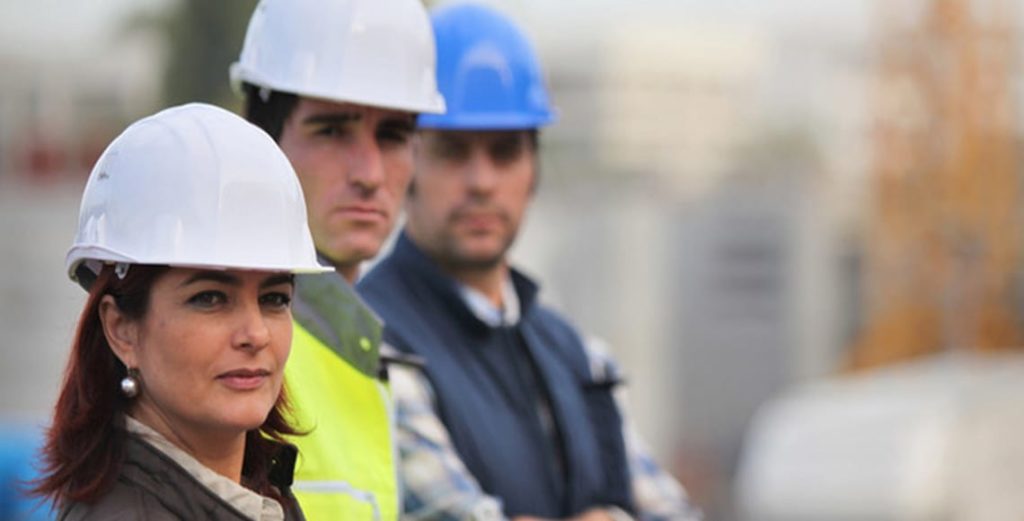
[vc_row][vc_column][vc_column_text]Not all work environments are created equal. While some people work in the comfort of an air-conditioned office and have access to clean bathrooms, others are on job sites where the nearest lavatory is dozens of feet below them, or an inconvenient distance away.
The Occupational Safety and Health Administration (OSHA) requires employers to provide workers with an adequate number of bathrooms for the size of the workforce. According to OSHA standards, “Employers with 20 or more employees must provide one toilet and one urinal per 40 workers. If an employer has 200 or more employees, one toilet and one urinal are required for every 50 employees.”
However, for some sectors, the problem isn’t about the number of available bathrooms but accessibility and how quickly workers can get to them. Working in industries such as construction, alternative energy, mining on solar farms, and on wind turbines often means running toilets aren’t always within reach.[/vc_column_text][vc_column_text]For most construction sites, portable restrooms are placed strategically away from driveways, walkways, or main roads. They’re typically kept away from high-traffic areas to keep them safe from oncoming trucks carrying materials. In addition, porta-potties also have to be placed on a level surface, so they stay stable. And because the portable restrooms are brought in by a truck, you need to find a spot that is accessible by the vehicle carrying them in and out.
Because of the many requirements of porta-potty placement, they often end up as far as 15 feet away from the main area where the construction takes place and where all the workers are. While the number of available restrooms is not an issue, reaching them can take a while; depending on where you work on the construction site.
Imagine how long it takes a worker who works on one of the higher floors or stands on the scaffolding has to travel to reach a porta potty. Each time a worker needs to pee or poop, they need to climb down and walk over to where all the portable restrooms are. Now, multiply their minutes by the number of workers on a job site. Those lost hours of productivity add up!
Unfortunately, some people decide they’re not going to make this journey and just hold it in – leading to UTIs and other health challenges. Often, workers get frustrated and simply openly defecate, by peeing or pooping in a bucket or a bottle. Sometimes it is behind a dumpster or in any corner of an unfinished floor. This causes a mess that someone has to clean up eventually, leading to even more unproductive hours![/vc_column_text][vc_separator][vc_column_text]
The stench of urine and feces alone is enough to drive most people away. However, because of the pressure on workers to get the job done, they may put up with it and continue to work, not to realize they’re putting their health at risk. Open defecation isn’t just an unsanitary and unsightly practice, but exposure to the human waste left behind can lead to some severe health problems.
While the odor of human waste alone can make you feel nauseous, it’s the potential transmission of viral and bacterial infections we have to worry about most. According to UNICEF, one gram of feces contains 10 million viruses, 1 million bacteria, and 1,000 parasite cysts.
Human excreta is a vector for bacterial diseases such as E-coli, salmonella, typhoid, cholera, and dysentery otherwise known as infectious diarrhea. Fecally-transmitted viral infections include rotavirus and hepatitis A. You will not feel the impact of coming into contact with the fecal matter until symptoms of the disease hit you.
Salmonella infection symptoms can develop within eight to 72 hours after ingesting contaminated water or food. You may develop abdominal cramps, fever, or diarrhea. We know that people suffering from diarrhea have very loose, watery stools. If they can’t control their bowel movements while at work and the bathrooms are too far away, they may relieve themselves somewhere else on the job site. Even if they try to clean it up, trace amounts will remain and could potentially make a coworker sick. And the cycle continues.
Fecal-oral transmission becomes a reality at job sites when workers also eat in the same area where someone has practiced open defecation. If a coworker is peeing or pooping away from designated bathrooms and doesn’t wash their hands afterward (or use a sanitary hand wipe) they could go back to work and contaminate everything they touch.
Hepatitis A is another virus found in infected feces. It can be transmitted in even the tiniest amounts, easily contaminating food and water. If someone with trace amounts of fecal matter on their hands were to touch a tool that many others throughout the day will use, the Hepatitis A virus could spread. While not everyone will have symptoms, those who do experience negative symptoms may suffer from diarrhea, vomiting, extreme lack of energy, or jaundice. It takes about 4 to 8 weeks to recover from Hepatitis A completely.
Exposed liquid and solid waste also attract flies and other insects, creating another oral-fecal route. The flies land on the feces, carrying disease-causing microbes with them and leaving them behind when they land on your hands or food. People end up unknowingly ingesting food with tiny, yet harmful, amounts of defecate matter.
The diseases that open defecation and human waste spread not only harms the health of your employees, but it also costs you money as productivity plummets whenever someone gets sick or refuses to work in an area that reeks of the stench of urine and feces.[/vc_column_text][vc_empty_space height=”25px”][vc_column_text]
Leadership should strive to inspire change in behavior and eradicate open defecation on job sites. It’s important not only to educate your workforce on the health risks linked to exposure to human waste but provide workers with a clean alternative to porta-potties.
Brief Relief Personal Lavatory Systems were designed with job sites prone to open defecation in mind. Knowing the realities of the practice, Brief Relief developed a safe and sanitary alternative when workers can’t get to a bathroom.
The Brief Relief Disposable Urinal Bag is a single-use, disposable urinal wag bag. Inside the sturdy plastic bag is a patented blend of polymers and enzymes that convert urine into a deodorized gel. It has a one-way valve that prevents accidents and spills. After use, snap it closed and store it away until you are able to properly dispose it into any trash receptacle. Brief Relief products come with antimicrobial wipes to disinfect your hands afterward and help stop the spread of disease.
The Brief Relief Disposa-John Portable Restroom is a triple barrier portable waste bag and liner for liquid and solid waste. It has multiple closures that seal in the waste and odor while the enzymes and polymers work to break it down and convert it into a deodorized gel. The Disposa-John works well with Brief Relief Portable Commodes, an excellent alternative to porta-potties and a much more portable solution.
Brief Relief helps minimize downtime and increase workers’ morale and productivity. It also helps eliminate health and safety risks on the jobsite, allowing workers to focus on their jobs.[/vc_column_text][/vc_column][/vc_row][vc_row][vc_column][vc_column_text]Check out our Personal Waste Bags and Portable Restrooms to find out yourself about Brief Relief’s health solutions and how they can benefit you in your workplace.[/vc_column_text][/vc_column][/vc_row]
In storms’ aftermath, portable, landfill-safe disposable bathroom solutions give utility workers, first responders and volunteer organizations access to hygienic sanitation facilities that contain waste.
ESCONDIDO, Calif. – Lack of access to functioning bathroom facilities in areas affected by the most recent hurricanes poses a serious threat to human health as the accumulation of human feces mounts. To help prevent bacteria-laden waste from spreading disease among residents and those helping with the relief and recovery efforts in the impacted communities, disposable toilet and portable lavatory systems that capture waste and are EPA-approved for landfills, like those manufactured by Brief Relief, are recommended to assist workers.
When human waste contaminates water systems, infectious bacteria such as E. coli, staphylococcus, salmonella and tetanus can spread by consumption or skin contamination and cause widespread and debilitating illnesses among populations.
“In areas hit by the recent hurricanes, there are many communities where adequate restrooms or portable facilities are not available for residents and those who have come to support them,” said Pete Lindemann, Brief Relief’s national sales manager. “We’re proud to aid in the efforts to keep everyone safe by providing access to sanitary facilities that also eliminate the environmental risks posed by the disposal of human waste outdoors.”
Brief Relief donated a range of supplies to Sprint to provide workers clean and safe sanitation systems while working to get much-needed service back up and running in the areas hardest hit by disruptions to communications networks, including:
In addition to its field restroom solutions, Brief Relief also provides other products designed to assist in emergency situations, including the Fluid Tactical Electrolyte Drink Mix, which provides those exposed to dehydration and heat stress with needed sodium and a balance of minerals such as calcium and magnesium to prevent cramps while working, and the Heat Relief towels that provide cooling relief.
“We are so grateful for the supplies we received from Brief Relief,” said Tanya Lin-Jones, a network engineering manager at Sprint who has responsibility for the Sprint Emergency Response Team (ERT). “They have been invaluable in helping our teams work as quickly and safely as possible to keep customers and emergency personnel connected across those regions impacted by the hurricanes.”
To help with sanitation and reduce the spread of disease, Brief Relief is offering free shipping of its products to all hurricane-affected areas in the continental United States through the end of September. Brief Relief products can be purchased online at https://briefrelief.com/shop. For more information about Brief Relief solutions, visit www.briefrelief.com.
About Brief Relief
Brief Relief disposable toilets and portable lavatory systems keep teams in the field and out of the public eye when nature calls. Besides being safe, convenient and sanitary options for men and women, using the products can help workers avoid being seen doing an act of “indecent exposure” by the public, cell phone cameras and news crews. The personal cooling systems and hydration products help keep crews safe and comfortable in even the most stressful conditions. To learn more, visit www.BriefRelief.com.
About Sprint
Sprint (NYSE: S) is a communications services company that creates more and better ways to connect its customers to the things they care about most. Sprint served 53.7 million connections as of June 30, 2017, and is widely recognized for developing, engineering and deploying innovative technologies, including the first wireless 4G service from a national carrier in the United States; leading no-contract brands, including Virgin Mobile USA, Boost Mobile and Assurance Wireless; instant national and international push-to-talk capabilities; and a global Tier 1 Internet backbone. Sprint has been named to the Dow Jones Sustainability Index (DJSI) North America for the past five years. You can learn more by visiting Sprint at www.sprint.com, www.facebook.com/sprint or www.twitter.com/sprint.
What happens when you’re on someone else’s massive property, in the middle of nowhere, 300 feet above the ground, and nature calls?
It’s not something a lot of workers may think about — until they have to think about it.
Thankfully, Brief Relief is a company that has put a great deal of thought into this leg-crossing predicament, and it has come up with a few solutions.
“We’re a manufacturer of a field restroom system, mostly designed for mobile work crews, anyone working outside who find themselves with the lack of a proper restroom facility,” said Pete Lindemann, Brief Relief’s national sales manager.
More often than not, outside workers often run the risk of using unapproved containers, which can cause legal problems and public relations nightmares.
To stop those problems in their tracks, the company has made the Brief Relief system.
Ally Bain was 14 when she experienced the humiliation of having an accident in public. She was out shopping with her mom when the urge to use the bathroom struck. As a patient with Crohn’s disease, she knew she had a matter of minutes before she would lose control of her bowels.
Read More at: https://www.huffpost.com/entry/ny-restroom-access-act_b_2926324
A look into the life of female cab drivers in New York City, the last story in a three-part series.
This is the last story in a three-part series on the life of immigrant workers in New York CIty. Here is Part One, on Chinese delivery workers, and Part Two on Latino construction workers.
Read More at: https://prospect.org/article/women-behind-wheel
There’s no denying that public bathrooms can be germ-ridden places. According to a study presented at the Infectious Diseases Society of America annual meeting, scientists who studied samples taken from a variety of public restrooms found that the sheer number of illness-causing bacteria present was too big to measure in many cases.
Read More at: https://www.everydayhealth.com/healthy-living/can-you-catch-germs-from-a-public-toilet-seat.aspx
New York City taxi drivers put up with a lot. But even for long-suffering hacks, the stomach-churning toilets they’re forced to use at the city’s busiest airport are too much to bear, they said.
The bathrooms at JFK Airport‘s Central Taxi Hold, where drivers queue up for fares, have fallen into an appalling state of disrepair. And drivers want an overhaul.
Read More at: https://www.nydailynews.com/new-york/queens/bathrooms-jfk-central-taxi-hold-appalling-cabbies-article-1.464819
Strict toilet break rules and inadequate facilities are causing discomfort and humiliation for some workers, a labour organization says.
Read More at: https://www.bbc.com/news/10360283